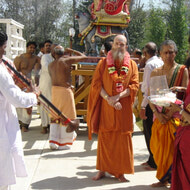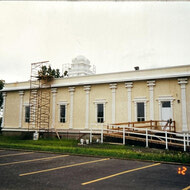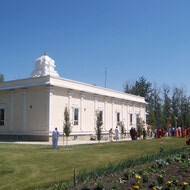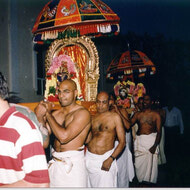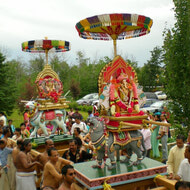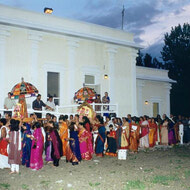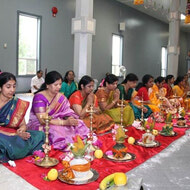Brief History of the Maha Ganapathy Temple
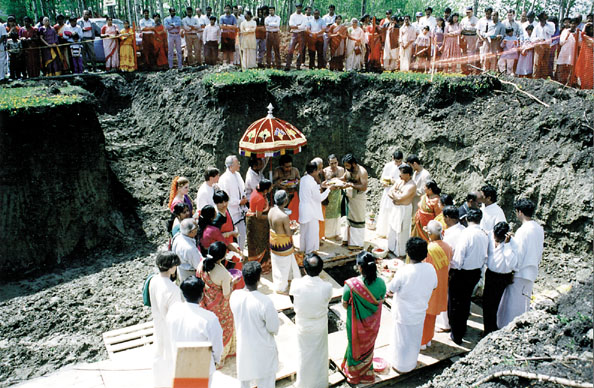 |
The Maha Ganapathy Temple was initiated in 1979 with the gift of an idol of Lord Ganapathy from his Holiness Satguru Sivaya Subramuniyaswami of Kauai Aadheenam (Hindu Monastery), Hawaii, and U.S.A. In August 1979, about twenty-five families from Sri Lanka started the worship of Lord Ganapathy which has manifested into the present Maha Ganapathy Temple. A Ganesha puja was also held at the University of Alberta for the wider Hindu community. In the fall of 1979, a room was rented at 10436 81 Avenue, and converted into a temporary shrine. A devotee and disciple of his Holiness Satguru Sivaya Subramuniyaswami drove every Sundays from Athabasca and performed morning puja. Once a month, the Sunday morning puja was held at the Knotwood Community Hall in Millwoods. |
|
A proposal to build a temple in Edmonton was made at the annual religious worship held on September 6, 1980. This suggestion was received with enthusiasm and a committee was formed on the same afternoon. The Maha Ganapathy Society of Alberta (MGSA) was incorporated, under the Societies Act, in the Province of Alberta on November 26, 1981. In December of 1982, the MGSA Board of Trustees decided to hold bi-weekly (Sunday morning and Friday evening) pujas at the rented facility. In February of 1983, the Siva Lingam Deity was installed. The brass statue of Palani Aandavar Deity arrived in Edmonton during the Skanda Shasti in October of 1984. In early 1982, the MGSA Board of Trustees explored the possibility of purchasing half an acre parcel of land, located at the north west comer of Millwoods Road East and twenty sixth Avenue. Later, in the summer of 1985, the MGSA Board of Trustees purchased a 4.7-acre parcel of land (current location) with a three thousand square feet house and a creek flowing through the property, in the southwest part of Edmonton. In the fall of 1985, the City approved the rezoning application for religious usage. Religious worship commenced in the house located on this property on December 25, 1985. |
|
|
A well-renowned temple architect from Madras, India prepared a conceptual floor plan of the temple in the summer of 1986. This was approved, in principle, by the general membership of the society. A resident priest commenced his duties on June 14, 1987. In October 1990, a Temple Building Committee was formed with instruction to prepare plans and raise funds for the purpose of building the temple. In May 1995, a local engineering company was hired as consultant to prepare the engineering drawings and apply for the building permit for the construction of the temple. The groundbreaking ceremony took place on Monday, May 27, 1996. The foundation laying ceremony took place on Sunday, June 2, 1996. The general contractor commenced work in July 1996 and completed the structural shell in spring of 1999. A temple architect from Canada along with four artisans from South India constructed the traditional architectural components of the temple between July 1999 and November 1999. The remainder of the interior work was completed by volunteers by the end of June 2000. The first consecration (Kumbabishekam) ceremony of the temple took place in July 2000. Along with this, the temple started offering simple lunch to the devotees on Sundays, which continues (except for 2020/21 pandemic period), with the support of the devotees. Ten-day festivals were held each year to commemorate the consecration of the temple. Numerous special religious festivals are also celebrated each year. The devotees attending the temple have grown considerably over the past decade. It is customary to perform Kumbabishekam every twelve years. This also provides an opportunity to conduct renovations and upgrades to the Temple. A Kumbabishekam ceremony was held from July 1 to 5, 2012 after installing the flagstaff. Starting from 2013, the annual festival was enhanced by adding chariot and other major festivals that continues today.
|




